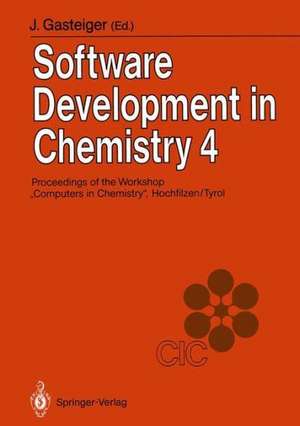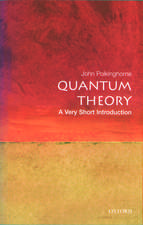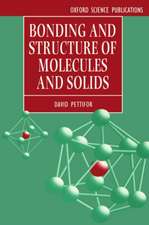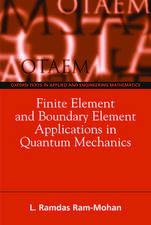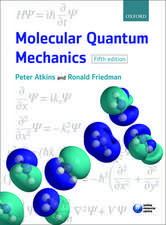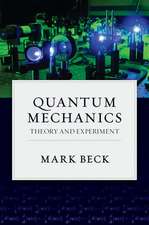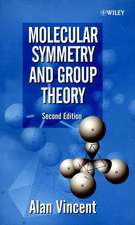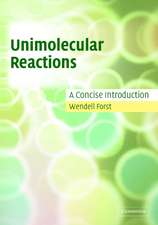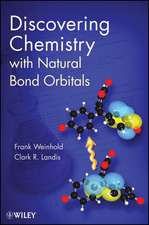Software Development in Chemistry 4: Proceedings of the 4th Workshop “Computers in Chemistry” Hochfilzen, Tyrol, November 22–24, 1989
Editat de Johann Gasteigeren Limba Engleză Paperback – 10 iul 1990
Preț: 650.19 lei
Preț vechi: 764.93 lei
-15% Nou
Puncte Express: 975
Preț estimativ în valută:
124.45€ • 135.23$ • 104.61£
124.45€ • 135.23$ • 104.61£
Carte tipărită la comandă
Livrare economică 21 aprilie-05 mai
Preluare comenzi: 021 569.72.76
Specificații
ISBN-13: 9783540521730
ISBN-10: 3540521739
Pagini: 436
Ilustrații: XII, 419 p. 5 illus.
Dimensiuni: 170 x 242 x 23 mm
Greutate: 0.69 kg
Editura: Springer Berlin, Heidelberg
Colecția Springer
Locul publicării:Berlin, Heidelberg, Germany
ISBN-10: 3540521739
Pagini: 436
Ilustrații: XII, 419 p. 5 illus.
Dimensiuni: 170 x 242 x 23 mm
Greutate: 0.69 kg
Editura: Springer Berlin, Heidelberg
Colecția Springer
Locul publicării:Berlin, Heidelberg, Germany
Public țintă
ResearchCuprins
1. Representation of Chemical Structures; Factual Databases.- Chemical Substructure Search on CD-ROM.- Documentation of Special Bond Types and Evaluation of Factual Data from “B-Base”.- AUTONOM: Automatic Generation of IUPAC-Names from Structural Input.- Keys to the Beilstein Database (A Ring Searching Algorithm).- The Integration of the Cambridge Crystallographic Data Files into the Relational Information Network of the German Cancer Research Center.- The Gmelin Information System — The Connection between Handbook and Database.- The WODCA System (An Integrating Environment for the Chemist).- 2. Structure and Properties; Bridging the Gap.- Computer-Assisted Analysis of Qualitative Structure/Activity Relations of Organic Molecules.- Prediction of the Threshold Soot Index for Hydrocarbon Fuels with Randic’s Topological Indices.- A Graph Theoretical Method to Estimate Substance Date.- PIMO, a Program Visualizing HMO Results by Producing Transferable Graphics Output.- The Calculation of Electrolyte Solution Properties with the Help of the ELDAR Data and Method Bank Exemplified by Electrolyte Conductance.- 3. Molecular Modelling.- Triangulation of Molecular Surfaces.- MOBY: Molecular Modelling on the PC.- ROCOCO: Reference Online Library for the Computer Aided Construction of Molecular Geometries. Computer Aided Construction of Realistic Molecular Models Using a Knowledge Base (I).- MMGEO — A Versatile Tool for MMX Users.- 4. Spectral Data; Acquisition and Interpretation.- JCAMP — DX, A Standard.- Automatic Interpretation of 2D-NMR-Spectra [1].- CDDS — A Personal Computer Based System for Automated Interpretation of GC/MS-Analyses.- EDAS-MS — Exploratory Data Analysis of Mass Spectra.- Towards the Automatic Generation of a Mass Spectrum from the Structure ofa Compound.- Factor Analysis of Spectral Data from Chemical Reactions.- Normalization of in Situ-Spectra in Thin Layer Chromatography.- Algorithms for Use in Purity Control of Drugs Using a UV-Spectroscopy.- DSYM-PC A Novel Program to Simulate HR-NMR Spectra for Spins I=1/2 on IBM-Compatible Computers of PC/XT/AT Type.- 5. Chemical Reactions and Synthesis Planning.- IGOR2: A Program System for Generating Chemical Reactions and Structures.- Reaction Databases in a University Chemistry Department — Online or In-house?.- Towards Synthesis Planning Aids Through Databank Analysis.- Implementation of Synthesis Strategies in PROLOG.- EROS 6.0, A Knowledge Based System for Reaction Prediction — Application to the Regioselectivity of the Diels-Alder Reaction.- CARSA (Computer-Assisted Research in Synthesis and Application).- 6. Simulations of Structures, Reactions and Properties.- Modelling of Polymer Gel Formation and Gel Reactions with Monte Carlo Methods for 3-Dimensional Networks.- Molecular Dynamic Simulation of the Interface Aqueous Ionic Solution / Lipid Membrane.- Electroanalytical Simulations. 10. The Simulation of Fast Second Order Reactions in Electrochemical Systems.- The Rashevsky-Turing System: Two Coupled Oscillators as a Generic Reaction-Diffusion Model.- Photoreactions in Solids — Experiment and Simulation.- 7. Computer Science; New Methods and Their Applications.- The Role of Machine Learning in Knowledge Acquisition.- Neural Networks.- Application of Fuzzy Neural Network to Spectrum Identification.- Tools for Automatic Program Generation.- Automatic Translation from FORTRAN to “C”.- 8. Miscellaneous Subjects.- LABORG — Laboratory Optimisation by the Elimination of Weaknesses and the Implementation of LIMS.- C - LIT.- Possibilities and Limitationsof Combined Database Enquiries Modelled on “Environmental Significance of Aluminum”.
